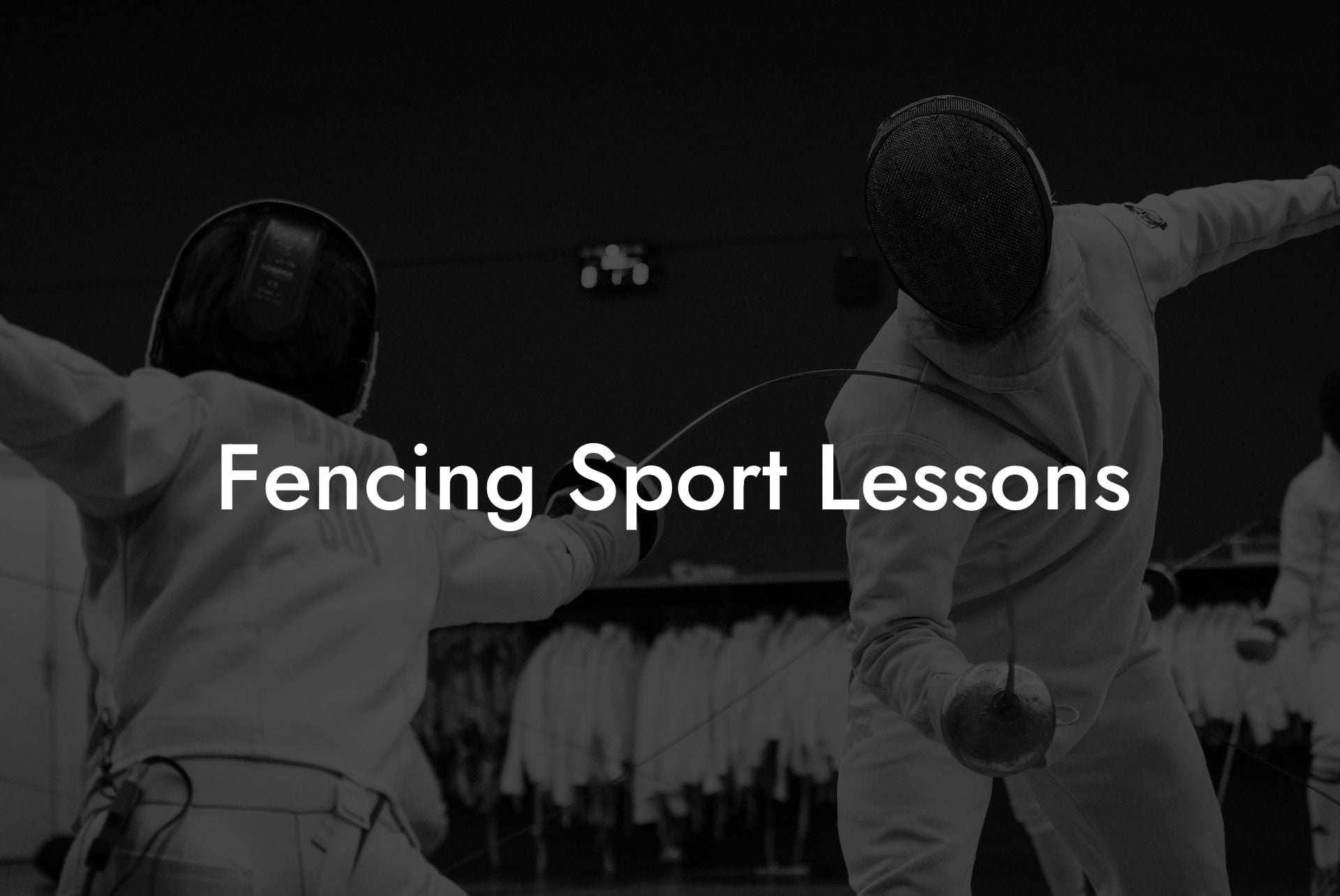Discover the exciting world of fencing as we delve into the basics of this elegant and strategic sport. Gain insight into the essential lessons and techniques that will help you improve your fencing skills and enjoy this incredible pastime to its fullest.
Fencing Sport Lessons Table of Contents
The Three Different Weapons
In the sport of fencing, there are three distinct weapons utilized in competition: the foil, épée, and sabre. Each weapon requires a unique approach and strategy, making it essential to understand their specific techniques and characteristics.
- Foil: Originally designed as a training weapon, the foil has a thin, flexible blade with a blunted tip. This lightweight weapon encourages precise and accurate point work. The target area in foil fencing is limited to the torso, making it essential to master foundational footwork and technique.
- Épée: A heavier, stiffer weapon than the foil, the épée was developed as a dueling weapon and remains a popular choice in modern competition. Fencers can score points by landing hits anywhere on the opponent's body with the épée's blunt tip. This encourages fencers to develop a broader range of strategies and a keen eye for tactical opportunities.
- Sabre: Inspired by the cavalry sword, the sabre is a cutting and thrusting weapon with a unique target area consisting of the opponent's torso and entire upper body, including the arms and head. This requires fencers to develop a blend of precision point work and powerful cutting strikes to be successful.
Basic Fencing Techniques and Positions
Regardless of the weapon choice, every aspiring fencer should begin by learning some fundamental techniques and positions that form the foundation of the sport.
- En Garde: The starting position for all fencers. Here, you face your opponent with your dominant foot forward and body slightly angled, maintaining a proper distance for attacking and defending.
- Lunge: A fundamental attacking move in which the fencer launches forward by extending the dominant leg and simultaneously reaching out with the weapon arm. The lunge covers a considerable distance quickly, making it an essential technique for scoring points in a bout.
- Parry: The act of defending oneself by deflecting an incoming attack with one's weapon. Parries are numbered in fencing (e.g., parry 4 or parry 6) to coordinate with specific attack lines and are an essential component of any fencer's repertoire.
- Riposte: A counterattack executed immediately after a successful parry. The purpose of a riposte is to capitalize on the opponent's vulnerability after their attack has been deflected.
- Fleche: A dynamic lunge-like move executed with a running start, often used in épée fencing to close the distance quickly and surprise the opponent.
Proper Footwork and Movement
Developing proficiency in fencing footwork is crucial to a fencer's success. Proper footwork allows the fencer to maintain balance, change directions quickly, and create opportunities for both attack and defense.
- Advance: A step forward made by moving the front foot first, followed by the back foot
- Retreat: A step backward executed in the same manner as the advance, but in reverse order
- Ballestra: A fast, explosive footwork technique often used to close the distance suddenly or deceive the opponent
Fencing Sport Lessons Example:
During a bout, Fencer A launches an attack on Fencer B with a quick lunge. Fencer B successfully executes a parry 4, deflecting the incoming attack and immediately responds with a riposte, scoring a point. Upon resetting to en garde, Fencer B performs a ballestra, quickly closing the distance and catching Fencer A off guard with an unexpected attack.
Fencing is a dynamic and exhilarating sport that offers numerous opportunities for personal development and enjoyment. We hope this guide on fencing sport lessons has provided a solid foundation of understanding and has piqued your interest in this fascinating discipline. Share this article with friends who may be curious about fencing, and be sure to explore the other informative guides on Anchorage Fencing Club for further insight into techniques, equipment, and tips for success on the piste.













